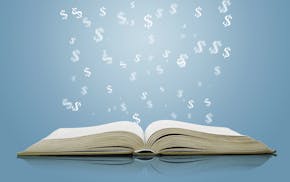Counting on your tax refund to help pay the bills during this recession? Then e-file.
Internet filers will see their refund in eight to 10 days, compared with four to six weeks for paper filers, according to the IRS. And the agency would love to have more e-filers because they save the government millions of dollars that it doesn't have.
In the past, e-filing cost some taxpayers $10 to $12 — far more than slapping a stamp onto paper forms. But this year, there's a free federal e-filing option for everyone. "There's no reason that virtually every taxpayer shouldn't be filing electronically," IRS Director David Williams said.
Most Americans can take advantage of free e-filing through the Free File Alliance, a seven-year-old partnership between several private tax-software companies and the IRS offering free software and e-filing to Americans with adjusted gross income of $56,000 or less.
For the 30 percent of taxpayers who don't qualify for the program, the IRS introduced fillable forms this year. The free forms will perform basic calculations for you (math errors are one of the more common tax return boo-boos), e-file your return for no charge and print it for your records. But here's the major drawback: The fillable forms are the electronic equivalent to paper forms. As such, they are best used by taxpayers who actually understand the absurdly complex tax code.
I don't know many people who fall into this category. Neither does the IRS, Williams said. But they wanted to offer another no-cost way to e-file because separate e-filing fees have been "a barrier." It's not uncommon for taxpayers to refuse to pay to file, choosing to use software and print out their returns to mail instead.
Bill Harrison was one of those taxpayers. TurboTax "just kept raising the price [to e-file] and I didn't really think it was worth it," he said.
But this year, the Rochester resident will join the e-filing ranks because tax software giants TurboTax by Intuit and H&R Block TaxCut have eliminated separate federal e-filing fees. Both companies are also giving away free online versions able to handle simple returns for taxpayers who itemize or take the standard deduction.
TurboTax spokeswoman Julie Miller said the free version won't work for more complex returns, such as filing a Schedule C for self-employment income. You can always try the free version of TurboTax online and upgrade to the $29.95 Deluxe version midway.
State e-filing will cost you
Free e-filing sounds fine and dandy, but I'm not paying less to do my taxes. I'm actually paying more.
I don't qualify for free file and my taxes are too complex for the free software, so this longtime TurboTax customer will need to use the $29.95 Deluxe online version to file. That's what I paid last year. The price for a program to prepare and file my state return has gone up $5, to $34.95. A total of $65 to finish my taxes still is less than a tax preparer would charge, but a lot more than I want to pay.
TaxCut online prices are similar.
Minnesota doesn't have state fillable forms for e-filing at this time.
But there is a more-affordable alternative. TaxAct's Online Ultimate Bundle includes its deluxe federal software, state software and a free e-file for both for $16.95. It won't import my data from the tax return I prepared in 2008 with TurboTax, though, meaning there will be the cost of my time for data reentry.
TurboTax's Miller said one reason for offering free stripped-down versions of TurboTax is to capture taxpayers when they're young and carefree. "Then, as their tax situation changes, they're already part of the TurboTax family," Miller said. It feels kind of like a family, in that it takes a lot of effort to get out. But in these trying times, it may be worth my trouble to reduce my tax-prep costs going forward.
I'm a good Minnesotan, though, so I'm not about to quit e-filing. We're No. 1 for e-filing state returns, said Jack Mansun, assistant commissioner of the Minnesota Department of Revenue. He expects that three in four Minnesota taxpayers will e-file this year. And the IRS said we're No. 2 in the nation for federal e-filing.
Two final notes about the current economy and taxes. Typically, more than 80 percent of taxpayers receive a refund; the average is $2,400. I know the tradition is to spend our refunds on big-ticket items. But resist the temptation and the calls from economists to prop up the nation with consumer spending. Instead, use this chunk of change to pay down debt or to add to your "what-if" account.
Reduced income means you may qualify for credits and deductions that were off the table last year. Visit www.startribune.com/kablog for a list of tax breaks to watch for.



